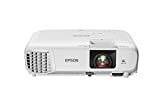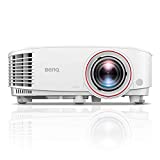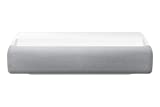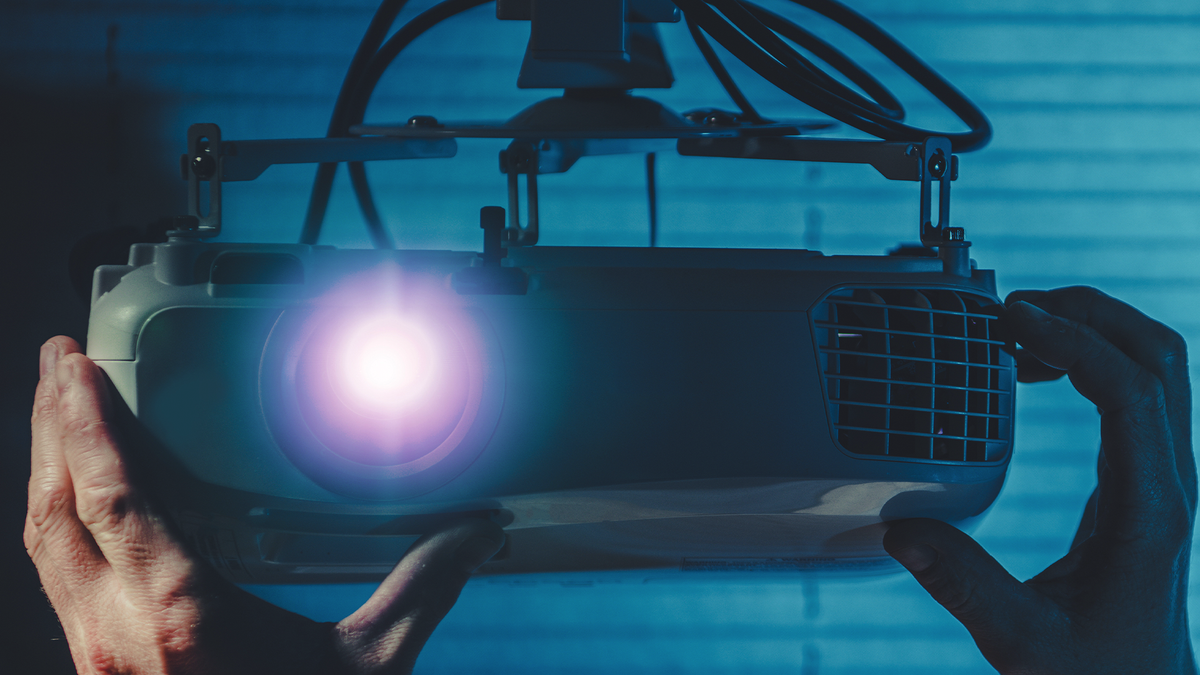
Because projectors are so different from TVs, they’re often described using niche language like “ultra-short throw” or “long throw.” But this terminology exists for a reason. Once you understand it, you’ll have a much easier time identifying how projectors work and deciding whether a long throw, short throw, or ultra-short throw model is right for your home.
What Does “Projector Throw” Mean?
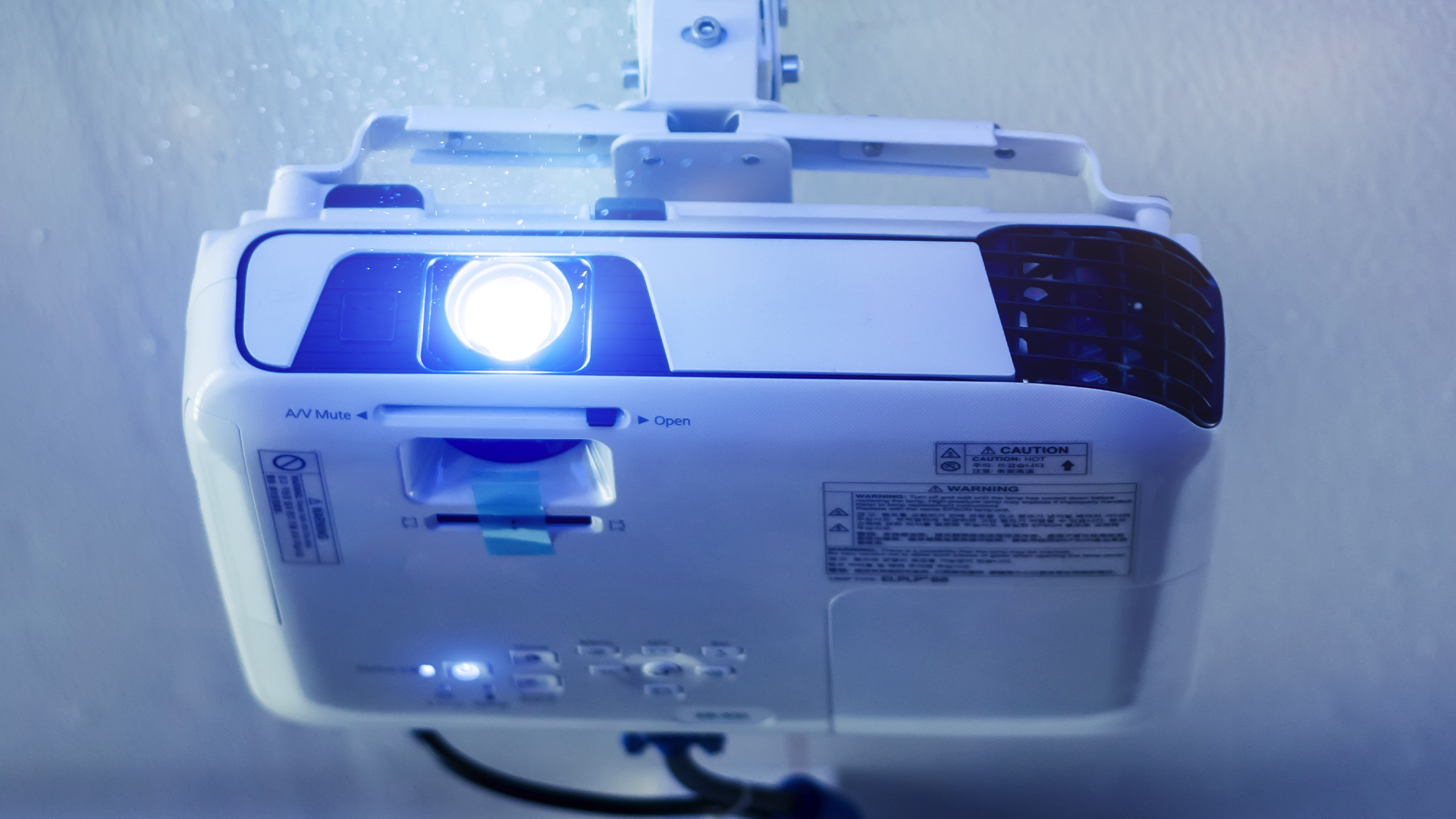
Projectors use specialized lenses to cast clean, distortion-free images on a screen. But you can’t just toss a projector in a room and expect to get a beautiful 100-inch picture. In order to get the picture size that a manufacturer promises from a projector, you need to set it at a certain distance from a screen or wall.
This ideal projection distance, usually called “throw,” depends almost entirely on a projector’s lens. One model of projector may work at six feet from a projection surface, while another needs to sit within inches of a screen to achieve the desired image size and quality.
Pulling a projector too far away from a screen will increase its image size at the expense of sharpness and brightness. But bringing the projector closer to a screen will have the opposite effect; your image will be smaller, brighter, and a bit crispier. That’s why manufacturers often list a handful of “throw ratios” for their projectors. The “throw ratio” simply describes the projection distance you need to accommodate standard screen sizes, like 80 inches, 100 inches, and 120 inches.
These measurements can be a bit intimidating to customers, and realistically speaking, the average person will only look at them when installing their projector. To make things a bit simpler, projectors are often separated into three categories—short throw, long throw, and ultra-short throw. These labels are fairly straightforward, but they can seriously impact your experience with a projector.
I have just one side-note. While most consumer-grade projectors have a fixed throw ratio, some high-end models feature a zoom lens, which lets you increase the distance between your projector and screen without sacrificing picture size or quality. Additionally, professional-grade projectors may have interchangeable lenses, though these projectors are too expensive for the average person.
Long Throw, Short Throw, and Ultra-Short Throw Explained
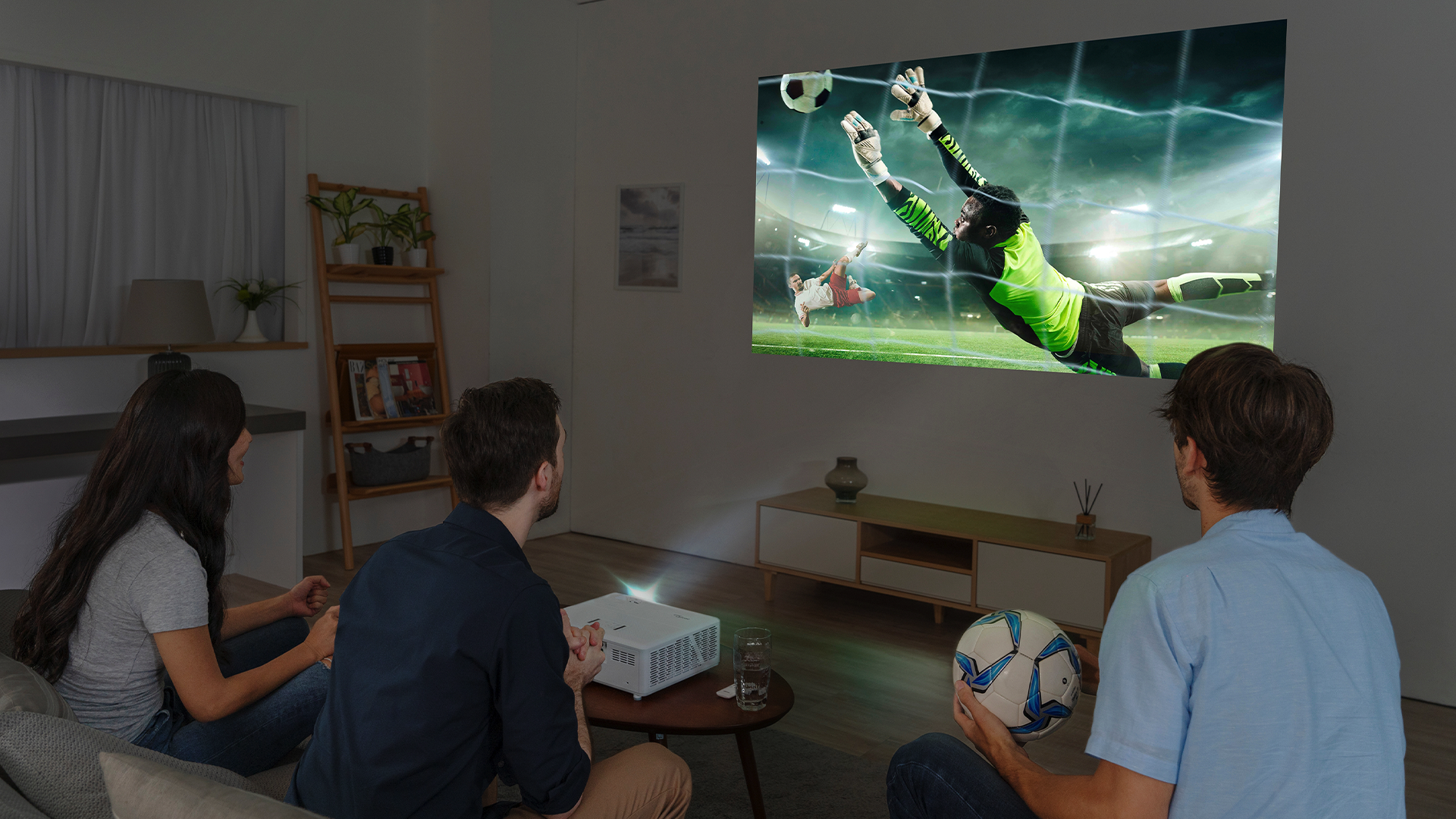
Most projectors use long throw lenses, meaning that they sit pretty far away from a screen or wall. These projectors usually need at least seven or eight feet of distance to cast an 80-inch image, and of course, longer distances will accommodate larger screens.
Short throw projectors are a bit different. They have special lenses that cast larger images at shorter distances. The average short throw projector can sit just five or six feet from a screen and cast an 80-inch image, making them an ideal option for small rooms, apartments, or rear-projection setups (where the projector hides behind the screen).
Note that short throw projectors can be a bit tricky to set up, as you may need to run wiring through the center of a room. Also, short throw projectors beam images in a trapezoidal shape (to compensate for the tight projection angle), so they can produce a distorted image if you don’t install them correctly.
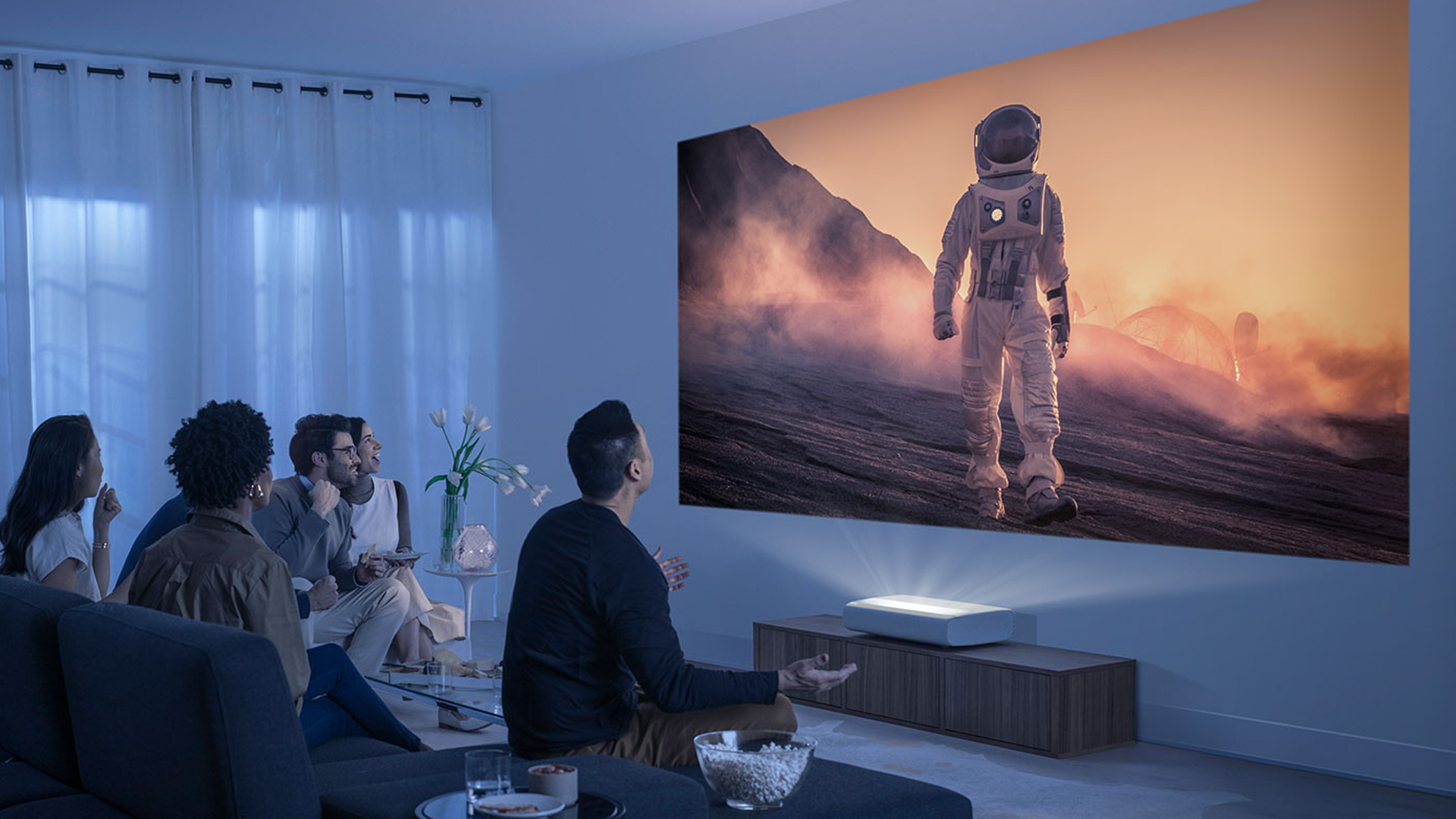
For those who want to set their projector against the wall, ultra-short throw is the way to go. These projectors use complicated lenses to bend light at an angle, and they often work within a few inches of a screen. That said, because ultra-short throw projectors are so meticulously engineered, they only work with a single screen size. (Manufacturers often sell multiple models of a single ultra-short throw projector to accommodate different screen sizes.)
The benefits of each category of projector should be fairly clear. In a smaller room, a short throw projector may be your only option. An ultra-short throw projector eliminates the possibility of people walking in front of the screen (a solid choice if you have kids), and long throw projectors are great for large rooms, as you can install them near a wall to keep those cables nice and tidy.
Additionally, long throw projectors are usually the best choice for outdoor viewing, as they can sit pretty far from whatever screen you’re using. (That said, placing a short throw projector behind a rear projection screen will give you the most compact outdoor setup.)
As Always, Cost Is a Factor
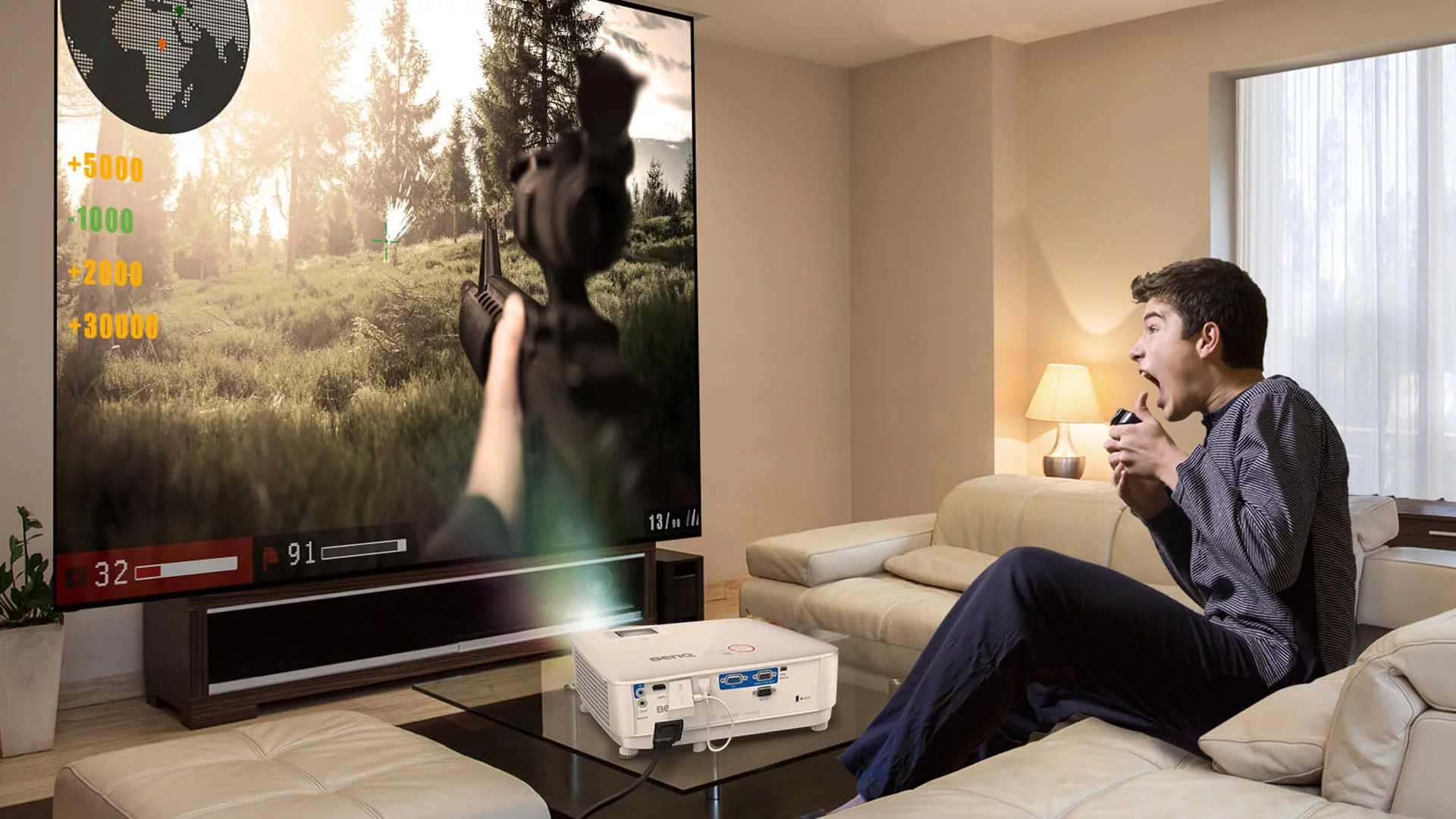
In a perfect world, we could freely choose any projector we want to use in our homes. But your budget will play a big role here, because certain types of projector cost more than others.
Part of the reason why long throw projectors are so common is that they’re relatively cheap. They use fairly basic lens technology that’s inexpensive to manufacture. If you’re shopping on a tight budget, there’s a good chance that you’ll end up with a long throw projector.
Short throw models are slightly more expensive, though not to the point of ridiculousness. You can expect to pay a couple hundred dollars extra for a short throw projector. Pricing only gets crazy when you shop for ultra-short throw projectors, which start at around $2,000 but tend to include a ton of cool features, like built-in sound systems.
Bear in mind that you’ll probably buy more than just a projector. If you don’t have a flat white wall, or you buy a projector that isn’t too bright, you’ll probably want to buy a screen (that’s at least $100). If you install your projector in the ceiling, you’ll need a mount. And of course, you may find yourself buying super-long HDMI cables, cable runners, and other accessories.
Which Kind of Projector Should You Buy?
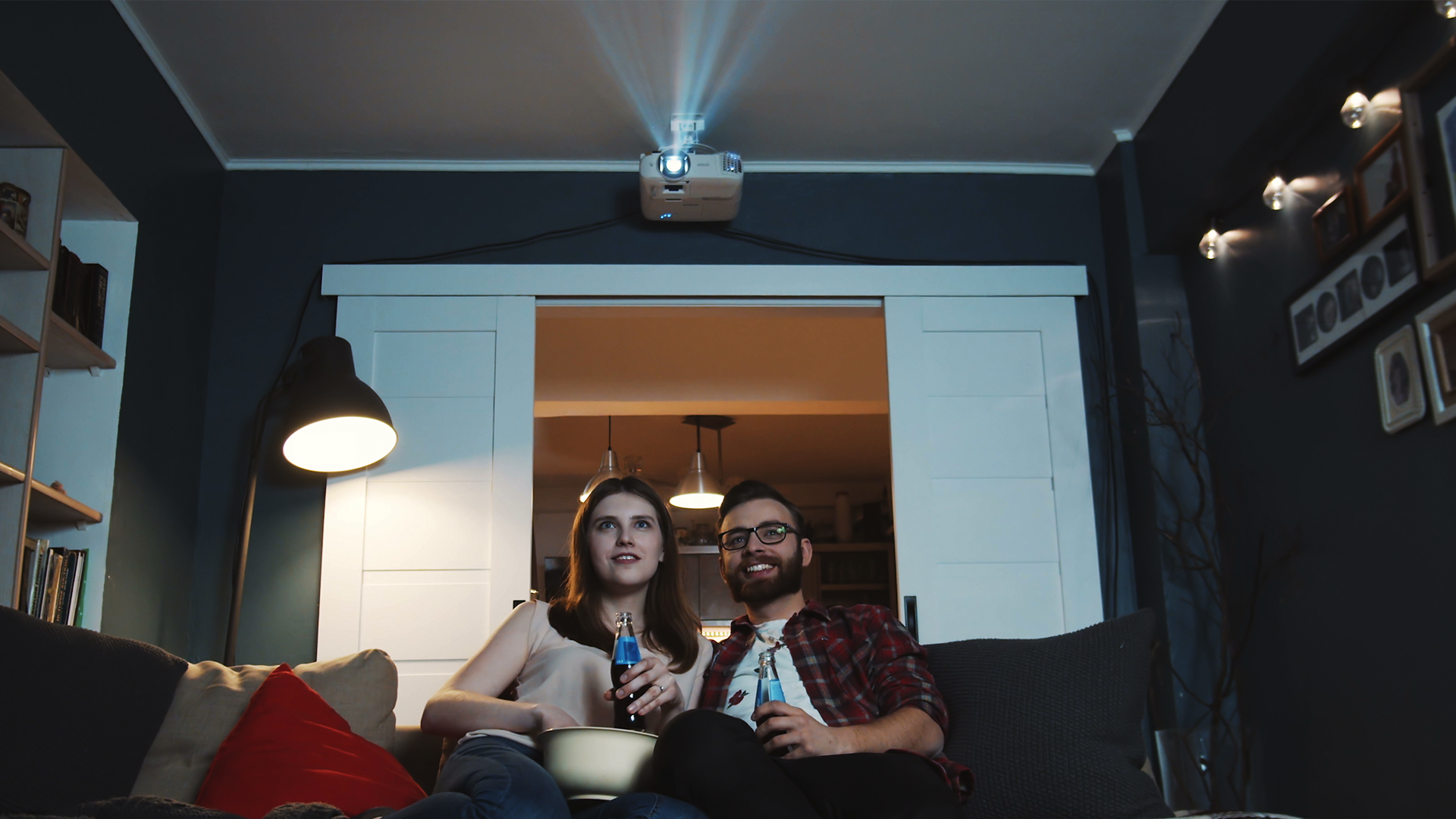
Most people should stick with long throw projectors. They simply offer more bang for your buck, and frankly, they’re usually easier to install than short throw models. You can stick a long throw projector on a piece of furniture or shelf across the room from your screen or wall—that’s super easy. And if you mount a long throw projector in the ceiling, you’ll have a relatively easy time with cable management, as you won’t need to run cables across the room.
For those who have the money, short throw projectors are often worth the extra price. They save space, they reduce the chance of blinding guests or children, are they’re often the only option for small rooms or rear projection setups.
Ultra-short throw projectors are a bit niche, but they’re awesome. The installation process is simple—just plunk it down on a piece of furniture in front of your wall. And while ultra-short throw models cost thousands of dollars, they often have built-in sound systems, smart features, and other perks, which may make them a cost-effective option for people who want an extensive home theater.
Epson Home Cinema 880 3-chip 3LCD 1080p Projector, 3300 lumens Color and White Brightness, Streaming and Home Theater, Built-in Speaker, Auto Picture Skew, 16,000:1 Contrast, HDMI 2.0, White
The Epson Home Cinema 880 long throw projector features a 1080p resolution, 3300 lumens of brightness (decent for daytime viewing), a built-in speaker, and a maximum 120-inch picture size at 12 feet of distance.
BenQ TH671ST 1080p Short Throw Gaming Projector | Gaming Mode for Intense Low Input Lag Action | 3000 Lumens for Lights On Entertainment | 3 Year Industry Leading Warranty
BenQ’s TH671ST short throw gaming projector packs a 1080p resolution, a built-in speaker, a low-latency gaming mode, and 3000 lumens of brightness. It casts a maximum 150-inch image at 12.3 feet of distance. BenQ TH671ST 1080p Short Throw Gaming Projector | Gaming Mode for Intense Low Input Lag Action | 3000 Lumens for Lights On Entertainment | 3 Year Industry Leading Warranty
SAMSUNG 120” The Premiere 4K Smart Laser Projector – 2.2Ch Sound System with Alexa Built-in (SP-LSP7TFAXZA, 2020 Model)
Samsung’s Premiere ultra-short throw projector casts a 120-inch image using lasers to achieve an incredible image quality. It also features a 2.2 channel sound system, Alexa built-in, and a 4K resolution.

